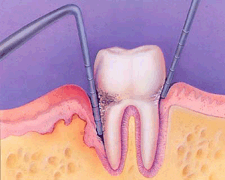المقالات
Gingival Grafting

First, we make sure that your gums are thoroughly numb so that you remain comfortable throughout the procedure. Then we take the graft from the donor site on the palate. In some cases, the incision in the palate heals on its own, but in other cases we close it with a stitch or two.
To place the graft, we must first gently separate the gums from the teeth. This creates a flap and gives us access to the area. We then carefully remove any plaque and tartar from the root surfaces. Finally, the graft is strategically placed and carefully stitched into place.
How grafting works After healing for a few weeks, the grafted tissue blends in beautifully. With grafting, we can restore and strengthen gums, cover and protect the root surfaces, and create a more natural and pleasing appearance.
When gums are healthy, they fit snug against the teeth, completely covering the roots. In some cases, often as a result of periodontal disease, the gums pull away from the teeth, exposing some of the root surface. When the roots are exposed, the teeth appear longer, an effect that can significantly age a person's smile. If left uncorrected, the loss of protective gum tissue may also cause even more severe problems. Fortunately, we can correct this problem with a procedure called grafting, in which we use tissue from your palate to cover the roots of teeth.
